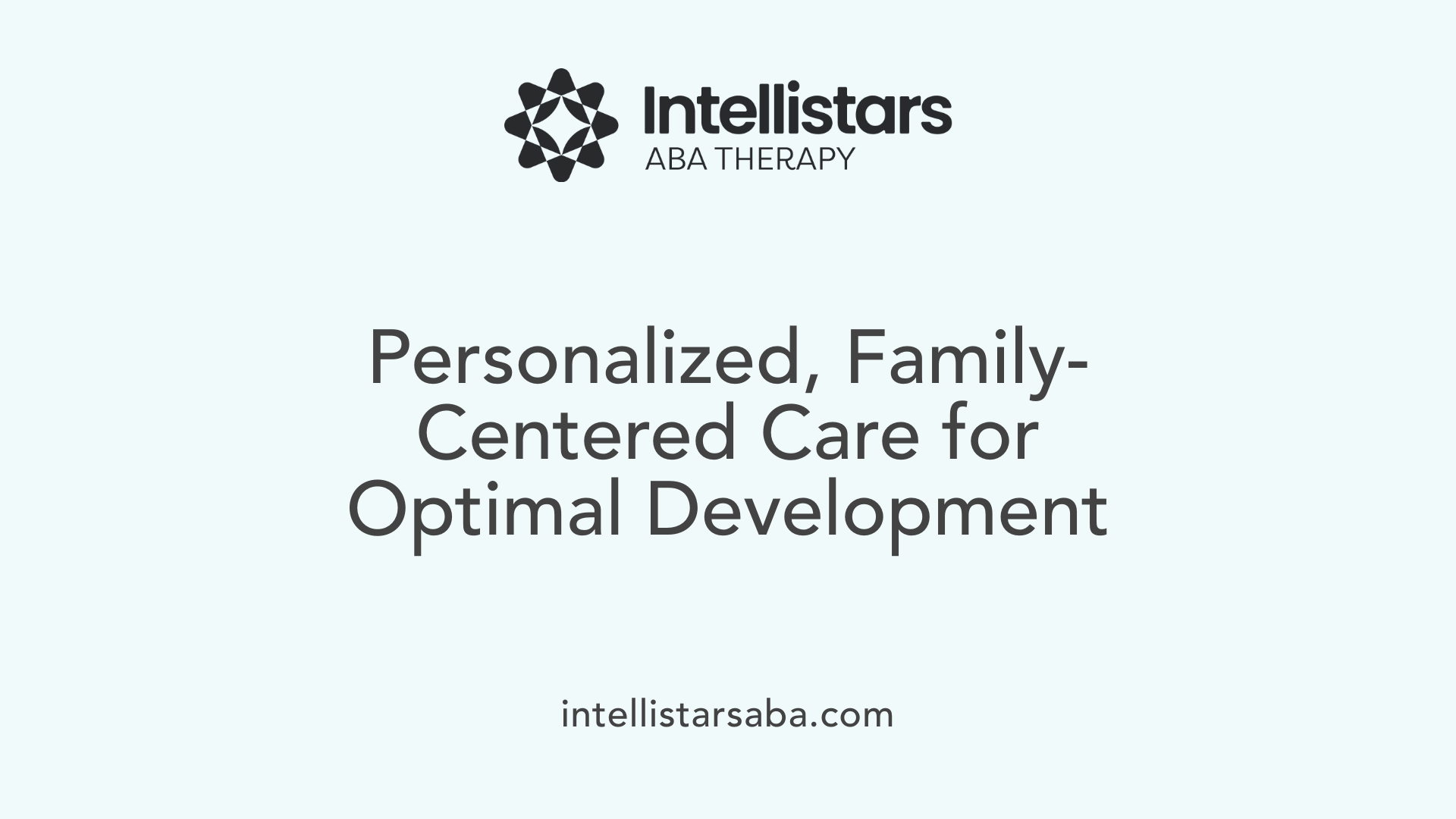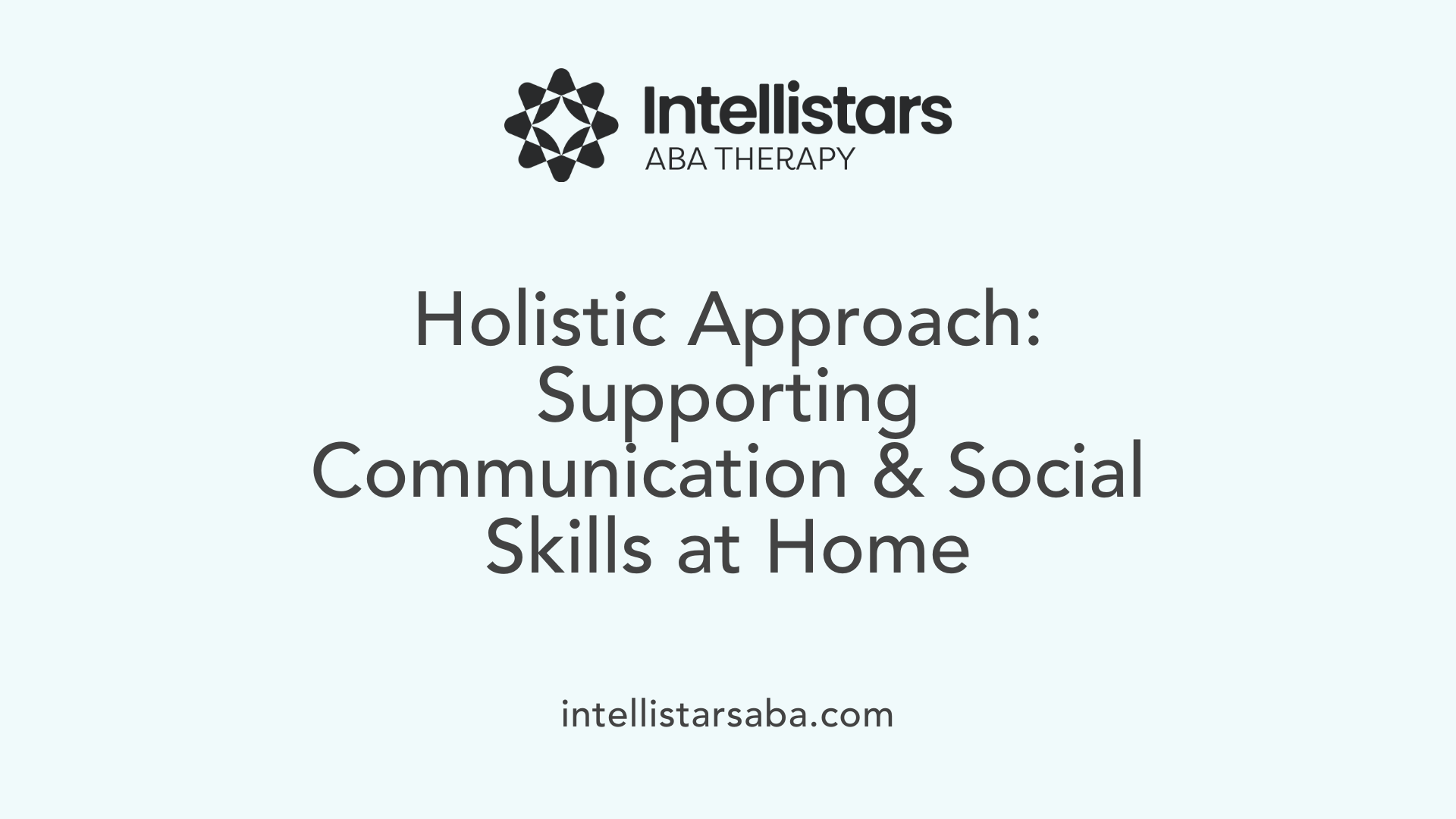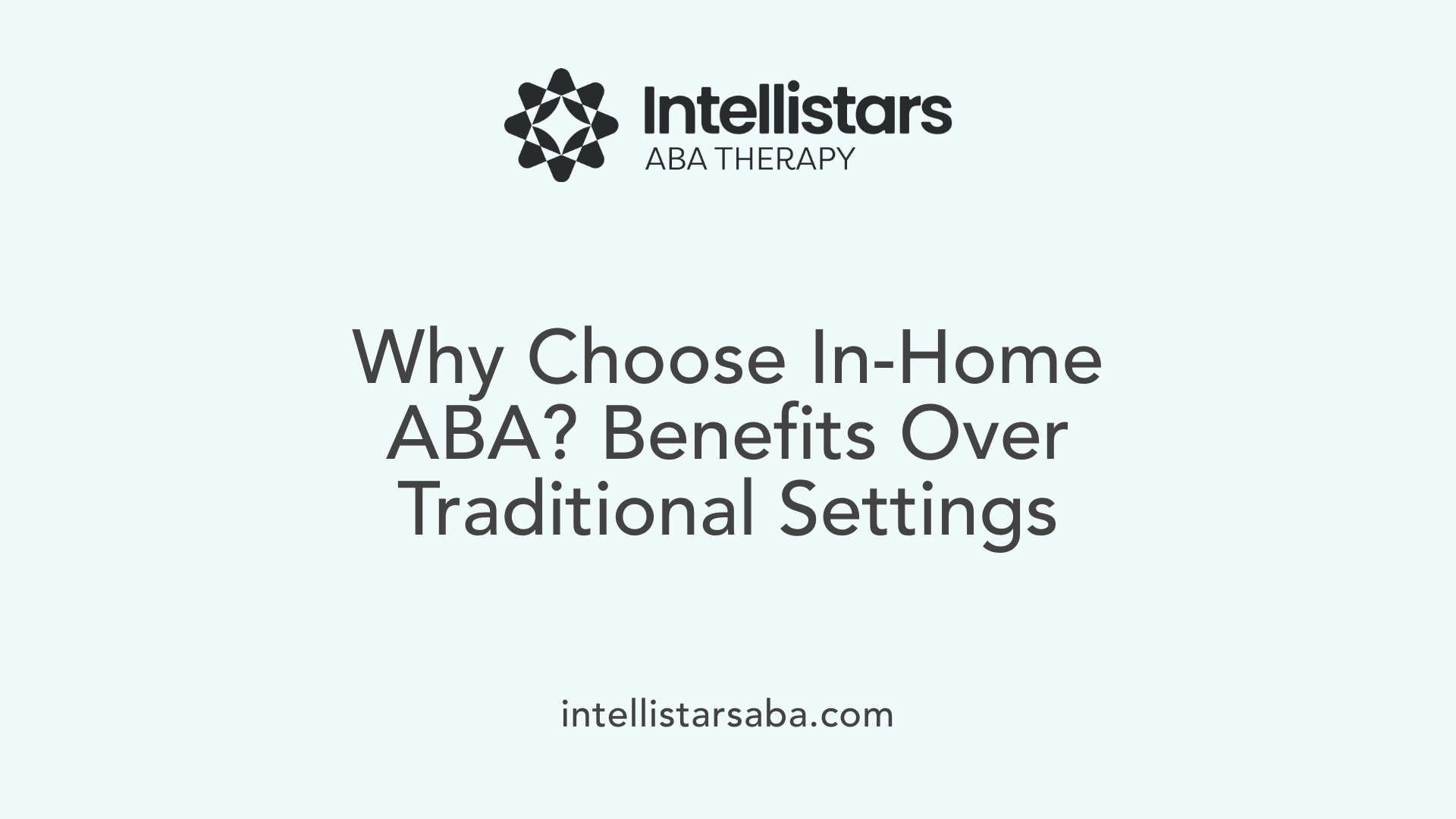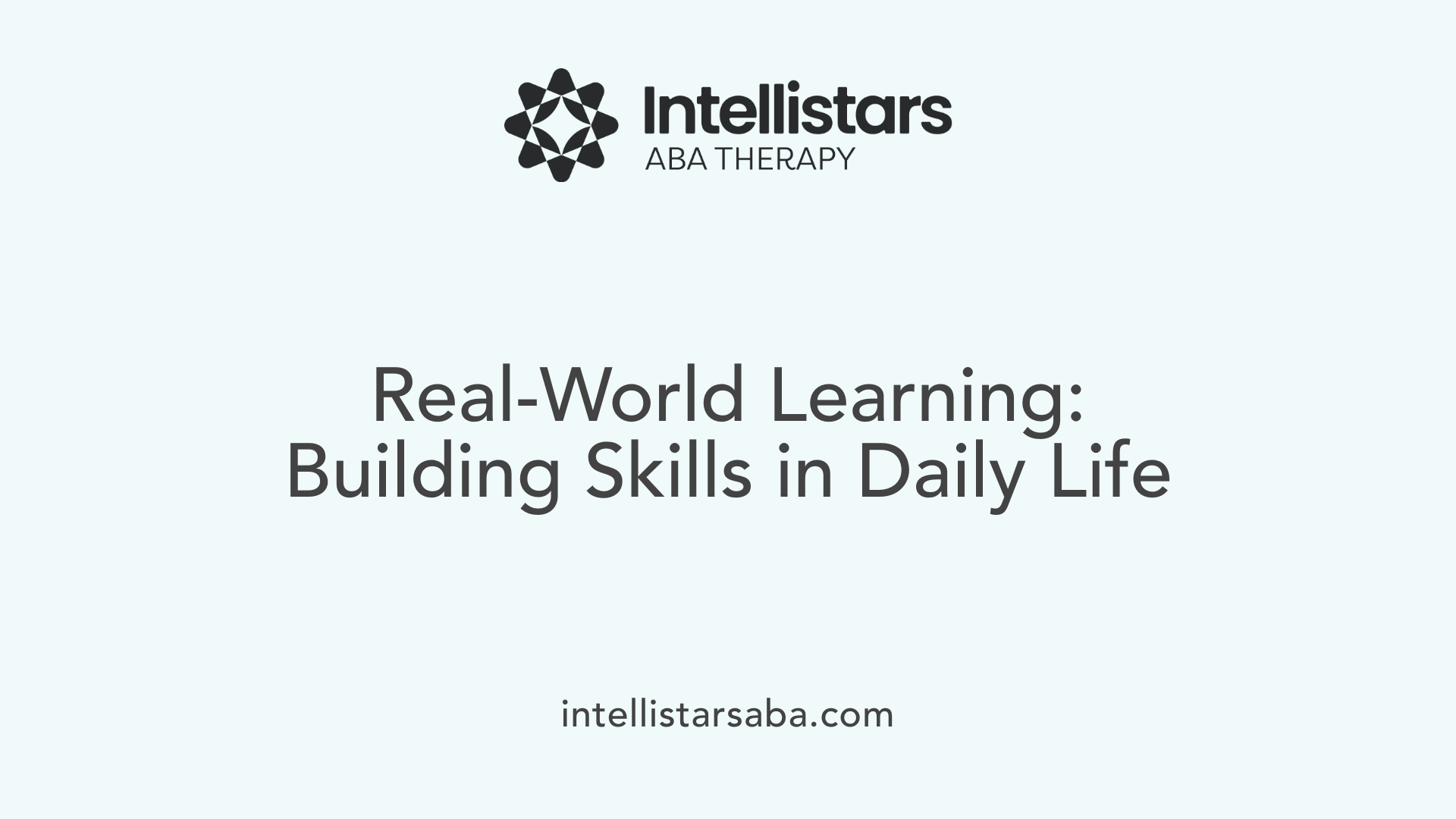Enhancing Development in a Familiar Environment
Home-based ABA therapy has emerged as a highly effective approach to supporting children with autism spectrum disorder (ASD). By providing personalized interventions within the comfort of their own homes, children can develop critical skills, reduce problematic behaviors, and enjoy a more engaging and less stressful learning experience. This article explores the multifaceted benefits of delivering ABA therapy in the home setting, detailing how it fosters comprehensive development and empowers families.
Personalization and Family-Centered Care

What are the benefits of home-based ABA therapy for children with autism?
Home-based ABA therapy offers many advantages for children on the autism spectrum. Conducted within the comfort and familiarity of home, therapy sessions create a relaxed environment that can lead to higher engagement and better learning outcomes.
This setting allows therapists to develop personalized, tailored interventions that address each child's unique strengths and challenges. Focus areas often include enhancing communication, social skills, daily living routines, and self-regulation abilities. By working in the child's natural environment, therapy can effectively promote real-world skills that are directly applicable to everyday life.
Family involvement is a vital component of in-home ABA therapy. Parents and caregivers participate actively, receiving training and guidance to reinforce strategies outside of formal sessions. This collaborative approach helps ensure that learned skills transfer seamlessly into daily routines, increasing the likelihood of sustained progress.
An additional benefit is the reduction in environmental stressors. Therapy at home minimizes exposure to illness—especially important for children with autism who may be sensitive to health risks—and eliminates the need for travel, saving time and reducing disruptions.
Overall, in-home ABA therapy offers a supportive, customizable environment that encourages meaningful growth. It fosters stronger family bonds, boosts confidence, and helps children develop independence, all within a setting that is safe and highly conducive to learning.
The Naturalistic and Holistic Approach

How does home-based ABA therapy support communication and social skills?
Home-based ABA therapy is designed to promote communication and social interaction in familiar settings, making it easier for children to practice and develop these vital skills. Therapists use evidence-based techniques, such as social stories, role-playing, and structured play, to teach children how to express their needs, understand others’ emotions, and engage in social routines like turn-taking and sharing.
Because therapy occurs in the child's natural environment, children often feel more comfortable, which increases their willingness to participate and focus. Family members, especially siblings, are actively involved in sessions, providing additional opportunities for social interaction and reinforcing learned behaviors outside of therapy hours.
Supporting emotional regulation through personalized strategies
Addressing emotional regulation is a core component of a holistic home-based ABA approach. Therapists work with families to identify triggers for challenging behaviors and develop tailored strategies to support self-regulation. Techniques may include teaching relaxation methods, using visual supports, and implementing consistent routines that foster a sense of safety and predictability.
Children learn to recognize and manage their emotions within the safety of their home environment, which can translate into better coping skills in other settings such as school or community spaces.
Incorporating daily routines and real-life situations for meaningful learning
One of the most significant advantages of home-based ABA therapy is its focus on integrating skills into everyday life. Therapists guide families on how to embed learning into daily routines like dressing, meal preparation, toileting, and bedtime. These routines provide natural opportunities to practice language, social skills, and independence.
Practicing in real-life settings, such as the grocery store, park, or family outings, helps children generalize skills beyond structured sessions. This real-world approach not only accelerates learning but also boosts confidence, independence, and social competence.
Overall impact of the holistic approach
The holistic approach to home-based ABA therapy emphasizes individualization and family involvement, considering the whole child’s development rather than isolated behaviors. It encourages consistency across all routines and environments, which is crucial for meaningful progress.
Involving parents and caregivers through training and collaboration ensures that therapeutic strategies are reinforced outside of sessions. This comprehensive method fosters better retention, generalization, and integration of skills into daily life, ultimately leading to improved independence, social participation, and emotional well-being.
Advantages Over Traditional Settings

What are the advantages of in-home ABA therapy compared to other settings?
In-home ABA therapy provides numerous benefits that can significantly enhance a child's learning experience. The familiar setting of the home makes children feel more comfortable and less anxious, leading to increased engagement and faster progress. Since therapy occurs in the child's natural environment, children can more easily generalize skills learned during sessions to everyday routines and activities.
Therapists working in the home can utilize household items and observe real-life interactions with family members, which helps customize interventions to fit the child's environment. This direct observation allows for tailored strategies that address specific household routines, such as mealtime or dressing, making the learning more relevant.
Family involvement is a cornerstone of home-based ABA therapy. Parents and siblings actively participate, receive training, and reinforce behaviors outside formal sessions. This continuous support promotes consistency and promotes skill retention over time.
Additionally, home-based therapy minimizes travel time and costs, offering greater scheduling flexibility that aligns with family routines. The safety aspect is also enhanced, as children are treated in a familiar and secure space, reducing exposure to illness and stress associated with clinic visits.
Overall, ABA therapy at home promotes a more personalized, practical approach to skill development, fostering better engagement, relevance, and sustainability of therapeutic gains.
The Critical Role of Family Engagement

How does family involvement enhance the effectiveness of home-based ABA therapy?
Family participation is essential in maximizing the benefits of ABA therapy at home. When parents and caregivers actively engage in the treatment process, they become empowered to implement behavioral techniques consistently across everyday routines. This consistency helps children better learn and generalize new skills beyond therapy sessions.
Training caregivers in ABA techniques equips them with the knowledge and confidence to reinforce positive behaviors, manage challenging behaviors effectively, and promote skill development. For example, caregivers can practice prompting, reinforcement, and data collection techniques learned during therapy, which leads to more rapid progress.
Involving family members, including siblings, fosters a collaborative environment that strengthens relationships and encourages social interaction. It also ensures that behavioral strategies are integrated seamlessly into family life, making therapy more relevant and effective.
Regular communication and training sessions with therapists help families understand each child's unique needs and goals. This partnership creates a supportive atmosphere where progress is monitored closely, and strategies are adapted as needed.
Research indicates that when families are actively involved in ABA therapy, children tend to master skills faster, show better retention, and generalize learned behaviors across different settings. Additionally, family engagement boosts motivation and reinforces the child's developmental gains, leading to sustained success.
In summary, including families deeply in ABA treatment transforms the therapy from a series of isolated sessions into a continuous, supportive process that promotes lasting behavioral and developmental improvements.
Promoting Skill Acquisition in Real-World Settings

How does home-based ABA therapy promote skill acquisition and learning?
Home-based ABA therapy is particularly effective at fostering the development of essential skills by harnessing the comfort and familiarity of the child's own environment. This setting allows therapists to tailor interventions to each child's unique needs and routine, making learning more relevant and engaging.
One of the main strategies involves using positive reinforcement—praise, preferred items, or activities—to encourage desired behaviors, thus strengthening the learning process. Therapists work with children to break down complex skills like communication, self-care, and social interactions into small, achievable steps. This structured approach helps children make steady progress.
Practicing skills within the home enables children to easily transfer what they learn during therapy to everyday life. By reinforcing behaviors in real-life contexts, children can generalize their new skills across different situations, such as mealtime, dressing, or playtime.
Parental involvement plays a critical role. Caregivers are trained to implement strategies consistently, which reinforces learning outside of therapy sessions. This active participation helps solidify skills and boosts the child's confidence.
Furthermore, immediate feedback during sessions allows therapists to quickly adapt techniques based on the child's response. This dynamic approach ensures interventions are effective and meaningful for each child's growth.
Overall, home-based ABA creates a supportive environment where children can practice and develop vital life skills, leading to more independent and adaptive behaviors over time.
Evidence Supporting Its Effectiveness
 Research has shown that home-based ABA therapy produces meaningful benefits for children with autism spectrum disorder (ASD). Multiple studies indicate improvements in crucial areas such as communication, social skills, and behavioral regulation. By providing therapy in the child's natural environment, interventions are more tailored and relevant, which enhances engagement and the likelihood of skill mastery.
Research has shown that home-based ABA therapy produces meaningful benefits for children with autism spectrum disorder (ASD). Multiple studies indicate improvements in crucial areas such as communication, social skills, and behavioral regulation. By providing therapy in the child's natural environment, interventions are more tailored and relevant, which enhances engagement and the likelihood of skill mastery.
Behavioral improvements often include increased language use, better social interactions, and a decrease in problematic behaviors like tantrums or aggression. Children learn and practice new skills within their daily routines, such as dressing, meal prep, and toileting, making the skills more applicable and easier to generalize across settings.
Regarding mastery rates, research comparing home-based and center-based ABA services has found that children tend to master more exemplars per hour in clinical settings. Specifically, children receiving both types of services demonstrated mastery rates that were 100% higher during center-based sessions compared to home-based ones, suggesting that the structured environment of clinics can sometimes facilitate faster learning.
However, home-based therapy remains highly valuable. Its personalized, familiar setting fosters comfort and motivation, which can lead to faster progress, especially when parents and caregivers are actively involved through training and participation. The combination of professional guidance and family engagement helps sustain progress and supports broader developmental goals.
Overall, evidence supports that when delivered by trained professionals, home-based ABA can significantly impact a child's developmental trajectory, improving day-to-day functioning, independence, and social abilities.
Fostering Growth, Confidence, and Independence Through Home ABA
Home-based ABA therapy stands out as a comprehensive, flexible, and family-centered approach that maximizes a child's developmental potential. By integrating interventions seamlessly into daily routines and real-world contexts, it nurtures essential skills while reinforcing positive behaviors within a familiar and supportive environment. The active involvement of families not only enhances learning outcomes but also empowers caregivers to sustain progress beyond therapy sessions. As research continues to validate its effectiveness, home-based ABA therapy continues to be an invaluable resource for fostering independence, social competence, and emotional well-being in children with autism, paving the way for brighter futures.
References
- Why Home-based ABA Therapy Is A Gamechanger
- A Program Evaluation of Home and Center-Based Treatment for ...
- Home-Based ABA Therapy - Children's Specialized ABA
- What are the benefits of in-home ABA therapy? | Autism Resources
- Benefits of In-Home ABA Therapy for Children - UTBS
- Home-Based Autism Therapy: Personalized Care for Your Child
- Applied Behavior Analysis (ABA) | Autism Speaks






